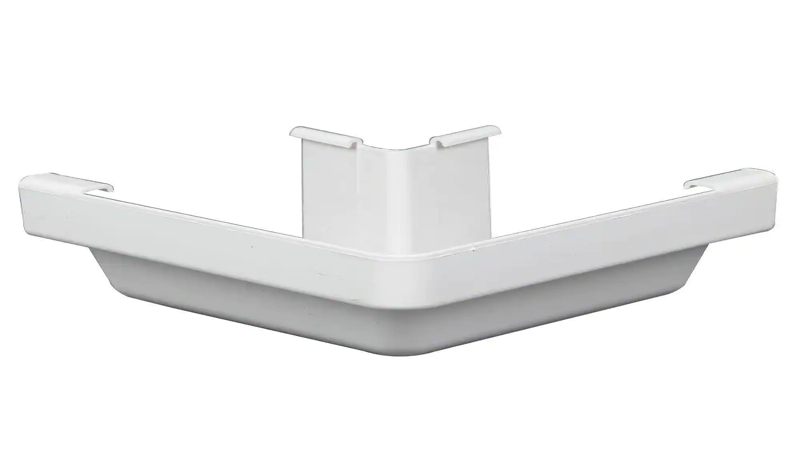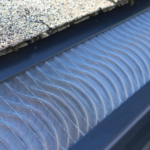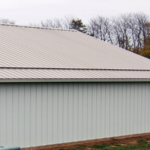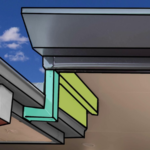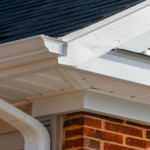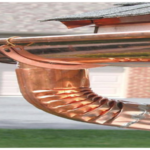If you’re planning to install gutters on your home, you’ll want to take the guess work out of the process by following detailed diagrams. By doing so, you can be sure that the gutters will be installed correctly and will function properly.
There are a few things to keep in mind when installing gutters, such as the pitch of the roof and the size of the gutters. The pitch of the roof will determine how much slope the gutters will need in order to drain properly. The size of the gutters will be determined by the amount of rainfall that the area receives.
Once you have these factors figured out, you can begin to install the gutters. The first step is to install the gutter hangers. These hangers will support the gutters and keep them level. Next, you’ll need to attach the gutters to the hangers. Be sure to use the correct screws and nails so that the gutters are properly secured.
After the gutters are installed, you’ll need to attach the downspouts. These will direct the water from the gutters to the ground. Be sure to use the correct brackets to secure the downspouts.
How do you calculate gutters installed?
To calculate gutters installed, you will need to determine the length of the gutter needed, the type of gutter, and the pitch or slope of the roof.
- To calculate the length of gutters needed, measure the length of the house or building. For example, a typical house has about 200 feet of gutter.
- The type of gutter will affect the price. There are two types of gutters: sectional and seamless. Seamless gutters are more expensive, but they are less likely to leak.
- The pitch or slope of the roof will also affect the price. The steeper the roof, the more expensive the gutters will be.
- To calculate the cost of gutters, multiply the length of the gutters by the price per foot. For example, if the gutters cost $5 per foot, the cost for 200 feet of gutters would be $1000.
- Installation costs will vary depending on the type of gutter and the pitch of the roof. Installation of seamless gutters on a steep roof can be expensive. Installation of sectional gutters is less expensive and can be done by a do-it-yourselfer.
How do you calculate gutter and downspout capacity?
- The rainfall intensity for your area – This is the amount of rain that falls during a rainstorm and is usually expressed in inches per hour.
- The size of your gutters – This is the width of the gutters, and is usually given in inches.
- The size of your downspouts – This is the diameter of the downspouts, and is usually given in inches.
- The rainfall intensity for your area – This is the amount of rain that falls during a rainstorm and is usually expressed in inches per hour.
- The size of your gutters – This is the width of the gutters, and is usually given in inches.
How do you plan a gutter system?
- Plan the location of the gutters. They should be installed beneath the drip line of the roof, which is the area where water drips down from the edge of the roof. The gutters should be installed at least 2 feet away from the house to allow for proper drainage.
- Determine the size of the gutters. The size of the gutters will be determined by the size of the roof. A larger roof will require larger gutters.
- Choose the material for the gutters. Gutters are typically made from aluminum, vinyl, or copper. Each material has its own advantages and disadvantages. Aluminum is the most popular choice because it is lightweight and inexpensive. Vinyl is also a popular choice because it is easy to install. Copper is the most expensive option but it is also the most durable.
How far below drip edge should gutters be installed?
It is important to install gutters so that they are level with the drip edge. This will ensure that the water flows properly and does not cause any issues with the gutters or the roof. If the gutters are installed too low, then the water will not flow properly and could cause problems with the roof or the gutters themselves.
How many linear feet of gutters on a 2000 square-foot house?
There are a few factors to consider when determining the amount of linear feet of gutters needed for a 2000 square-foot house. The first is the size and shape of the house. A two-story house will need more linear feet of gutters than a one-story house of the same square footage. The second factor is the amount of rainfall the area receives. A house in an area with high rainfall will need more gutters to handle the increased water flow. The third factor is the slope of the roof. A steeper roof will require more gutters to ensure that all the rainwater is directed away from the house.
Assuming a one-story, 2000 square-foot house in an area with average rainfall, you will need approximately 200 linear feet of gutters.
How do you calculate linear feet of gutters?
To calculate linear feet of gutters, you need to measure the length of the house or building and the height of the gutters. Multiply the length by the height to get the square footage of the gutters. Divide the square footage by the width of the gutters to get the linear feet of gutters.
What is the rule of thumb for gutters?
There is no definitive answer to this question as the best course of action will vary depending on the specific circumstances of the house in question. However, as a general rule of thumb, it is generally advisable to clean out gutters at least once a year in order to prevent them from becoming clogged and causing water damage to the home.
How many downspouts do I need for 60 foot gutters?
There are a few things to consider when deciding how many downspouts you need for your gutters. The first is the size of your gutters. The second is the amount of rainfall your area typically gets. And the third is the amount of runoff you want to prevent.
For example, if you have standard-sized gutters and live in an area with moderate rainfall, you might only need two downspouts. But if you have larger gutters and live in an area with heavy rainfall, you might need four downspouts.
As a general rule, you should have one downspout for every 20 to 30 feet of gutter length. So, for a 60-foot gutter, you would need three downspouts. But again, it ultimately depends on the specific circumstances of your home.
Final Word
If you’re looking to install gutters on your own, be sure to check out detailed diagrams to help you through the process. This way, you can avoid any guesswork and ensure that your gutters are installed correctly.
